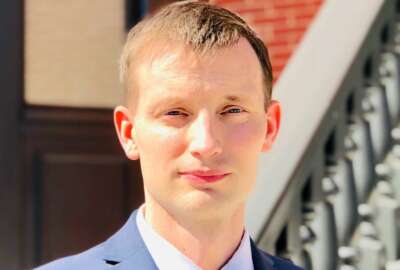

The Conflict Observatory brings together teams and technology to track the conflict in Ukraine. The project sprung out of evidence-based policymaking efforts.
A State Department-backed program using open source data and satellite imagery to document potential Russian war crimes in Ukraine is continuing to add partners to the technology-driven effort, while the agency is considering how such an approach could be applied more broadly in the future.
The Conflict Observatory is intended to serve as a “central hub to capture, analyze, and make widely available evidence of Russia-perpetrated war crimes and other atrocities in Ukraine,” according to the organization’s website.
Since last May, the effort has brought together teams from industry, academia and other non-governmental organizations to develop reports on mass graves, damage to cultural heritage sites, and other developments in the grueling conflict.
The Conflict Observatory is funded through the State Department’s Bureau of Conflict and Stability Operations. Susan Wolfinbarger, team lead for the bureau’s Office of Advanced Analytics, said the effort has been a natural extension of the State Department’s Instability Monitoring & Analysis Platform (IMAP).
State launched IMAP under the Foundations for Evidence Based Policy Making Act of 2018. The platform uses ArcGIS geographic information software to track and map global conflict trends, and IMAP products are available to all 75,000 State Department employees.
After Russian forces invaded Ukraine last January, the State Department extended the IMAP capability to serve as the basis for the Conflict Observatory’s mapping needs.
“This was a really obvious next step for us in terms of thinking about how we can gather this information and have it analyzed and have it shared publicly,” Wolfinbarger said in an interview at the Esri Federal GIS Conference in Washington last week.
The observatory is able to track developments in Ukraine remotely using commercial and open-source satellite imagery.
“We have a lot of commercial satellite imagery, optical, both high and low resolution,” Wolfinbarger said. “We’re using some synthetic aperture radar, we’re using some thermal detections from NASA satellites. So we’ve got this whole suite of fully remote technologies with satellite imagery.”
The availability of such imagery has come a long way over the last decade, Wolfinbarger said. Instead of waiting for weeks to get a single satellite image of a given area, the Conflict Observatory can get images every single day.
The constant stream of data is key for investigators trying to pinpoint the development of events, like when a building was destroyed.
“Instead of saying, ‘Well, it was destroyed sometime in this three-week period,’ you can say, ‘It was intact on this day, and the next day it was destroyed,’” Wolfinbarger said.
While the imagery is crucial, the analysis is the next step in documenting potential war crimes and other events. Wolfinbarger said teams working under the Conflict Observatory use digital open source investigative techniques, poring over social media feeds, blogs and other online data sources to help corroborate what they see in the satellite images.
The teams follow international standards like the Berkeley Protocol on Digital Open Source Investigations, so the Conflict Observatory’s reports can be admissible in court.
Artificial intelligence and machine learning are also helping the observatory’s teams to analyze images and identify damaged buildings, attacks on grain siloes and other developments. “AI is really revolutionizing the digital investigation area,” Wolfinbarger said.
“Ukraine is large, and to have people trying to look at those sorts of things, you would never be able to keep up with that tempo,” she said.
Industry partners on the project include Esri, GIS firm Alcis, defense intelligence firm Jane’s and defense contractor Quiet Professionals LLC. Meanwhile, research, analysis, and documentation is provided by Yale University’s Humanitarian Research Lab, the Smithsonian Cultural Rescue Initiative and PlanetScape Ai.
The observatory’s team is just short of 70 people in total, and Wolfinbarger said they’re looking to add more partners in the future.
While there are numerous groups that track conflicts and other global developments using open source data, Wolfinbarger said the strength of the Conflict Observatory is its ability to bring together experts from different fields.
“This kind of investment in technologies and analytics is something that we’re looking at into the future, particularly in CSO as a bureau,” she said.
Wolfinbarger is now leading a team that’s examining where similar efforts could be applied elsewhere in the world.
“We don’t really have an answer right now about that, but it’s definitely something that we’re exploring,” she said.
Copyright © 2025 Federal News Network. All rights reserved. This website is not intended for users located within the European Economic Area.
Follow @jdoubledayWFED


